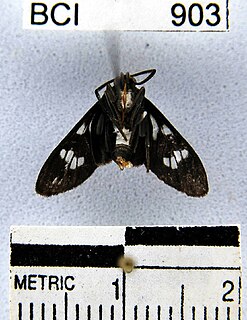
Autolycus of Pitane was a Greek astronomer, mathematician, and geographer. The lunar crater Autolycus was named in his honour.
Grado Labs is an American audio manufacturer known for hand building high-end dynamic open-back headphones and cartridges in Brooklyn, New York.

Fire Emblem: The Sacred Stones is a tactical role-playing game developed by Intelligent Systems, and published by Nintendo for the Game Boy Advance handheld video game console in 2004 for Japan and 2005 in the West. It is the eighth entry in the Fire Emblem series, the second to be released outside Japan, and the third and final title to be developed for the Game Boy Advance after The Binding Blade and its prequel Fire Emblem.

Grado is a town and comune of 8 064 residents in the north-eastern Italian region of Friuli-Venezia Giulia, located on an island and adjacent peninsula of the Adriatic Sea between Venice and Trieste. The territory of the municipality of Grado extends between the mouth of the Isonzo and the Adriatic Sea and the lagoon of the same name which covers an area of about 90 square kilometers and goes from Porto Buso to Fossalon. Characteristic of the lagoon is the presence of the casoni, which are simple houses with thatched roof used in the past by the fishermen of Grado, who remained in the lagoon for a long time, returning to the island of Grado only during the colder period of the year.

This is a list of the Patriarchs of Grado. The patriarchate came into being when the schismatic Patriarch of Aquileia, Paulinus (557–569), moved to Grado in the mid 6th century. But in its reunion with Rome in 606, a rival office was set up in Old-Aquileia. Initially, the patriarchs in Grado claimed the title of Patriarch of Aquileia but in the early 700s it was officially changed to Patriarch of Grado. Old-Aquileia later entered communion with Rome but was able to keep its independence and title from Grado. Throughout their history, the patriarchs of Grado, with the support of Venice, fought military, politically, and ecclesiastically the patriarchs of Aquileia, who were supported by the Lombards, then the Carolingians and the Holy Roman Emperors. The dispute between Grado and Aquileia was partially resolved in 1132 by Pope Innocent II, who restored many of the traditional episcopates to Aquileia, including the Diocese of Istria, while giving to Grado to the Venetian Lagoon, Split, and the Dalmatian islands of Arbe, Veglia and Ossero. Adrian IV placed the archdiocese of Zara under the jurisdiction of the Patriarchate of Grado, making it a true patriarchate with a metropolitan see under it, the only patriarchate of this kind in Western Europe besides Rome. After 1349, the patriarch of Grado and his subordinates were chosen by the venetian Senate, and the names merely sent to Rome for confirmation. In 1451, with the papal bull Regis aeterni, Nicholas V merged the see of Grado with Castello to form the Roman Catholic Archdiocese of Venice. The Patriarch of Venice derived its patriarchal rank from Grado. Throughout its existence, the Patriarchate of Grado was tied to the rising and powerful city of Venice, which was in the ecclesiastical jurisdiction of Grado, rather than to the small city of Grado. The Patriarchs often resided in the church of San Silvestro in Venice where they officially 'visitors', since cannon law did not allow them to reside permanently in territory of another diocese.
Elaea was an ancient city of Aeolis, Asia, the port of Pergamum. According to the Barrington Atlas of the Greek and Roman World, it was located near the modern town of Zeytindağ, İzmir Province, Turkey. The ruins of the silted port's breakwater can be seen on satellite maps at 38°56'35.54"N 27°2'16.34"E.

Grado is a municipality in the Autonomous Community of the Principality of Asturias in Spain. It is bordered on the north by Candamo and Las Regueras, on the east by Proaza, Santo Adriano and Oviedo, on the south by Teverga and Yernes y Tameza, and on the west by Belmonte de Miranda and Salas.

Pitane, near Çandarlı, Turkey, was an ancient Greek town of the ancient region of Aeolis, in Asia Minor. It was situated near the mouth of the river Evenus on the bay of Elaea. It was one of the eleven ancient Aeolian settlements, and possessed considerable commercial advantages in having two harbours. It was the birthplace of the academic philosopher Arcesilaus, and in the reign of Titus it suffered severely from an earthquake. The town is still mentioned by Hierocles. Pliny the Elder mentions in its vicinity a river Canaius, which is not noticed by any other writer; but it may possibly be the river Pitanes, spoken of by Ptolemy, and which seems to derive its name from the town of Pitane.

Hedylidae, the "American moth-butterflies", is a family of insects in the order Lepidoptera, representing the superfamily Hedyloidea. They have traditionally been viewed as an extant sister group of the butterfly superfamily Papilionoidea. In 1986, Scoble combined all species into a single genus Macrosoma, comprising 35 currently recognized and entirely Neotropical species, as a novel concept of butterflies.

The Phaegopterina are a subtribe of tiger moths in the tribe Arctiini, which is part of the family Erebidae. The subtribe was described by William Forsell Kirby in 1892.

Heliura is a genus of moths in the subfamily Arctiinae. The genus was erected by Arthur Gardiner Butler in 1876.
Pitane is a genus of moths in the family Erebidae.

Rhipha is a genus of moths in the family Erebidae. The genus was erected by Francis Walker in 1854.

The Viale Lazio massacre on 10 December 1969 was a settling of accounts in the Sicilian Mafia. Mafia boss Michele Cavataio and three men were killed in the Viale Lazio in Palermo (Sicily) by a Mafia hit squad. The bloodbath marked the end of a ‘pax mafiosa’ that had reigned since the Ciaculli massacre until the end of the Trial of the 114 against Cosa Nostra.
Chetone histrio, or Boisduval's tiger, is a moth of the family Erebidae. It was described by Jean Baptiste Boisduval in 1870. It is found in Honduras, Guatemala and Peru. The habitat consists of rainforests and cloudforests at elevations between 500 and 2,000 meters on the eastern slopes of the Andes.
Pitane fervens is a moth in the family Erebidae first described by Francis Walker in 1854. It is found in South America.

Graeme Stevely, better known by the ring name Grado, is a Scottish professional wrestler and actor, currently signed to World of Sport Wrestling and Insane Championship Wrestling (ICW), where he is a former ICW World Heavyweight Champion.
Atarneus, called Atarneus sub Pitanem to distinguish it from the other city of the name, was a town of ancient Aeolis near Pitane.










